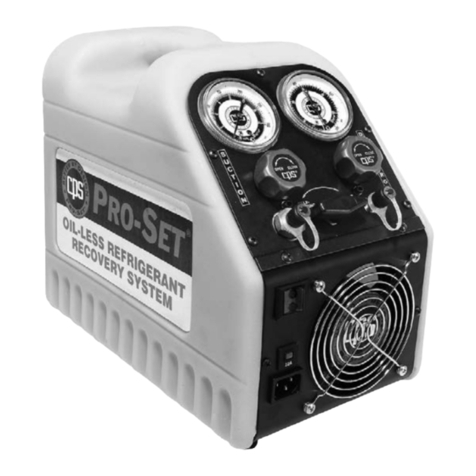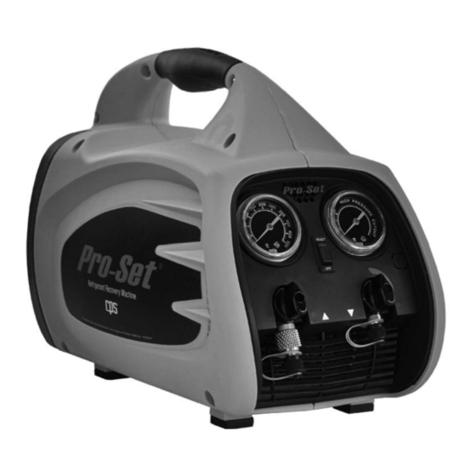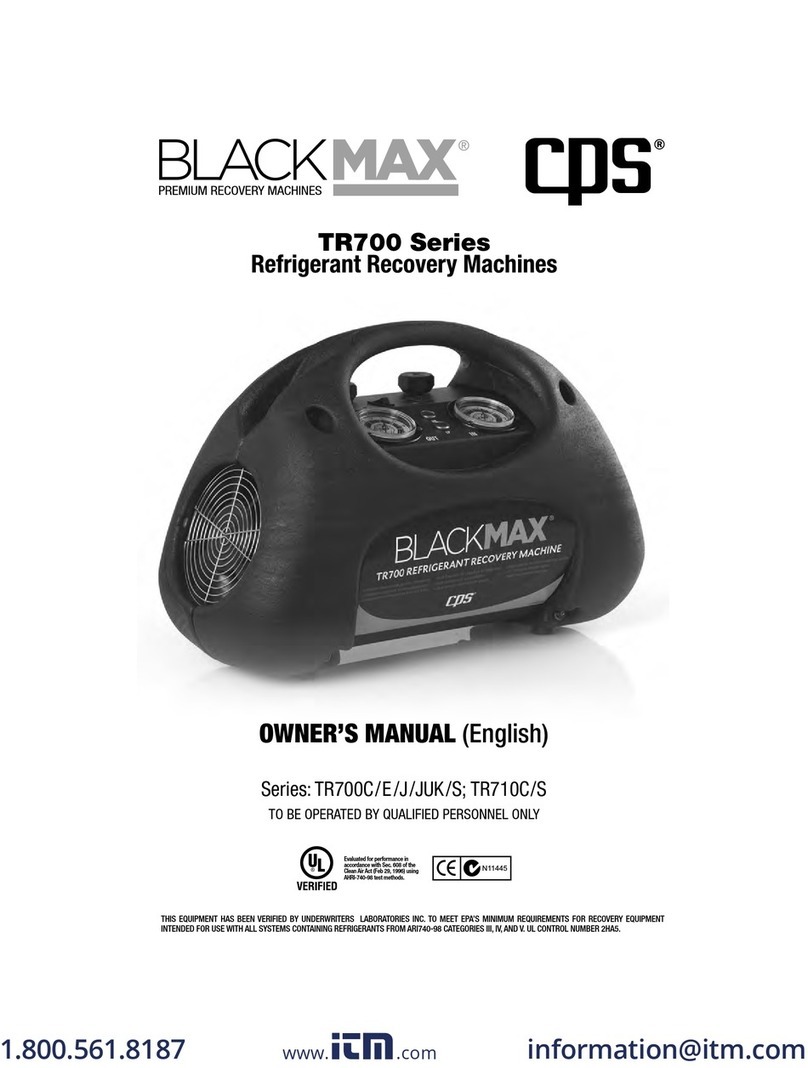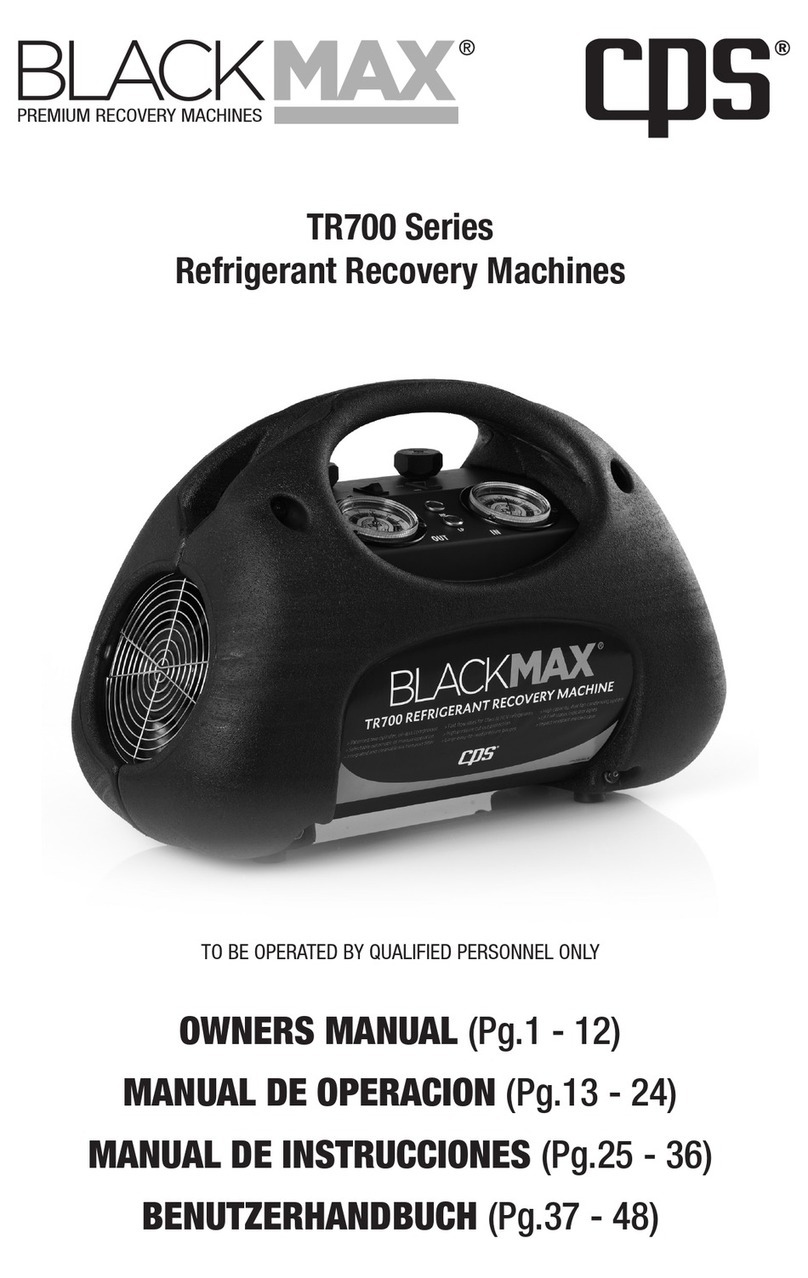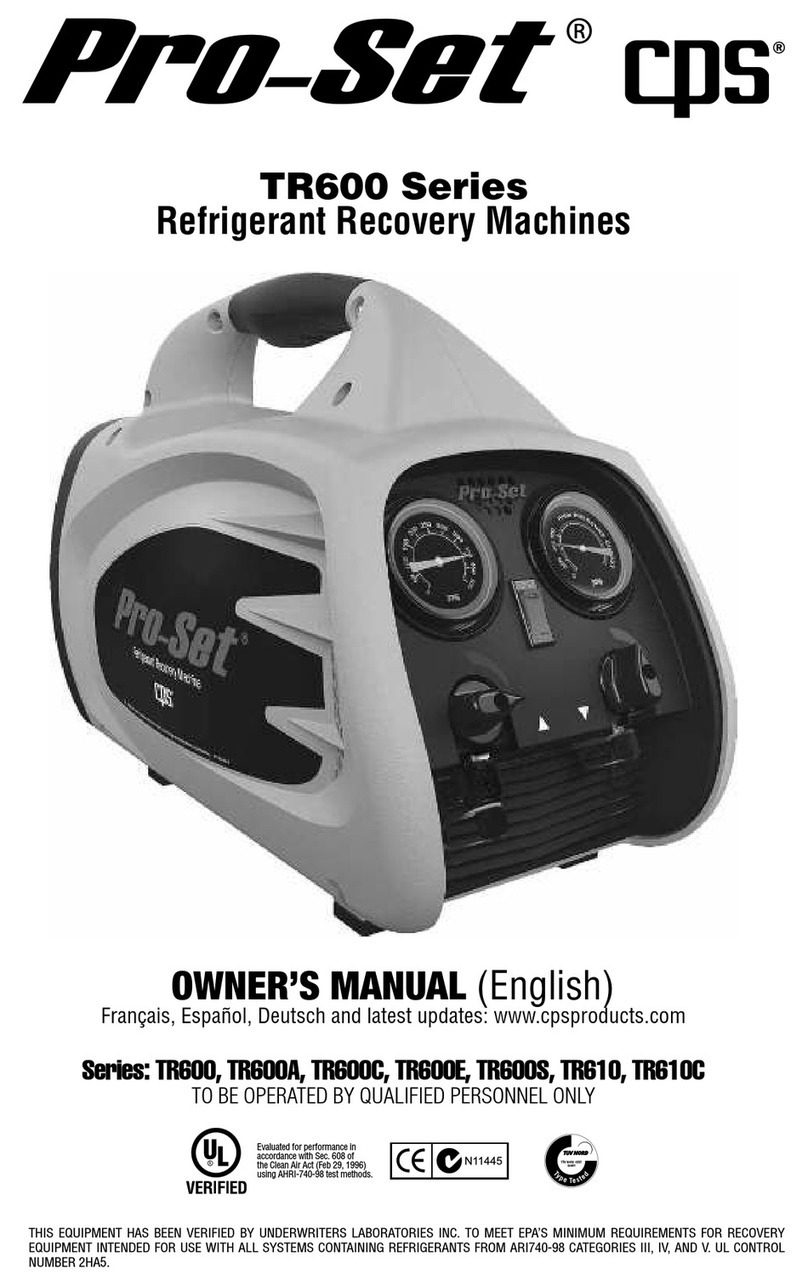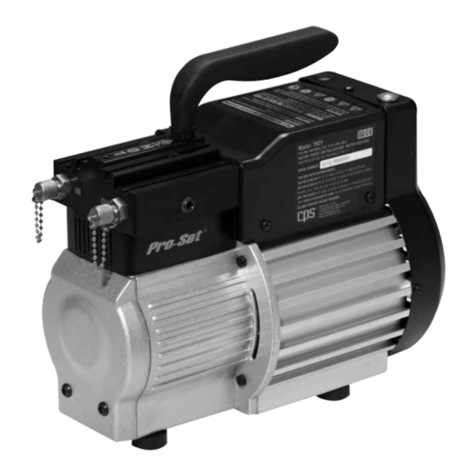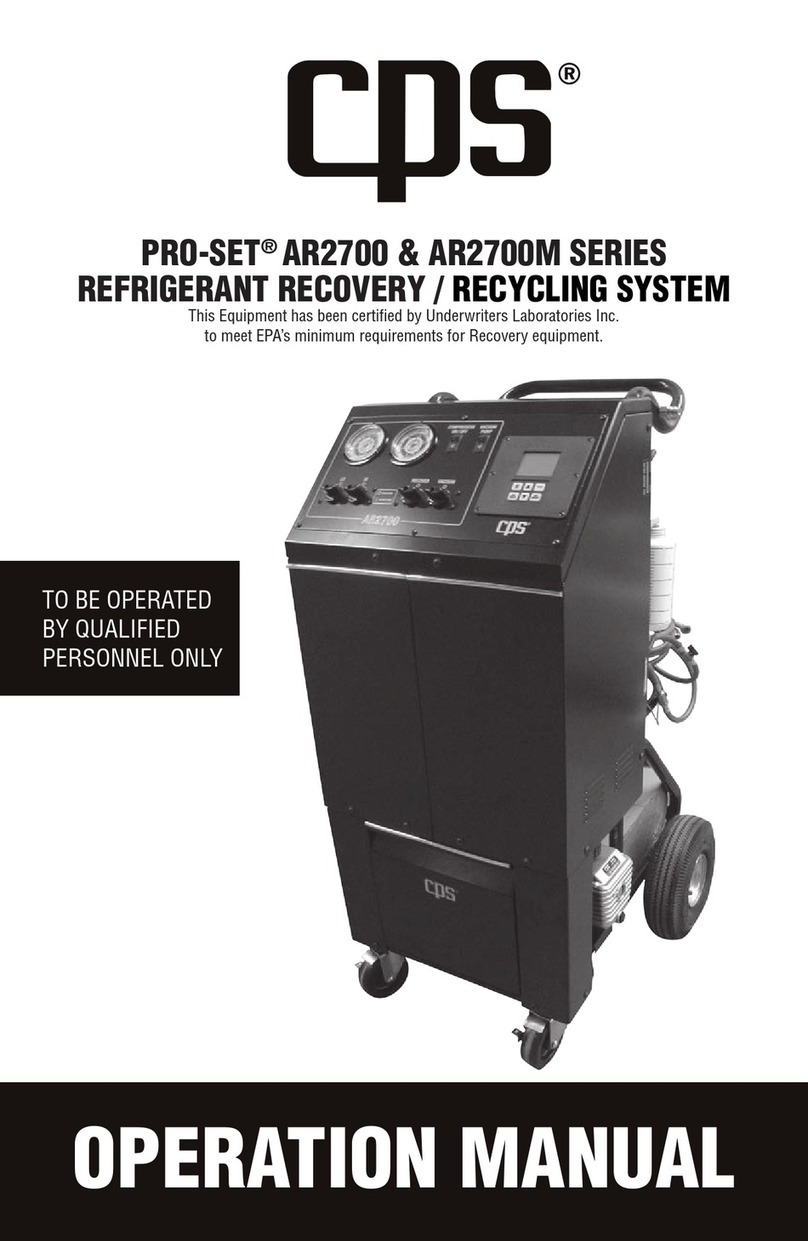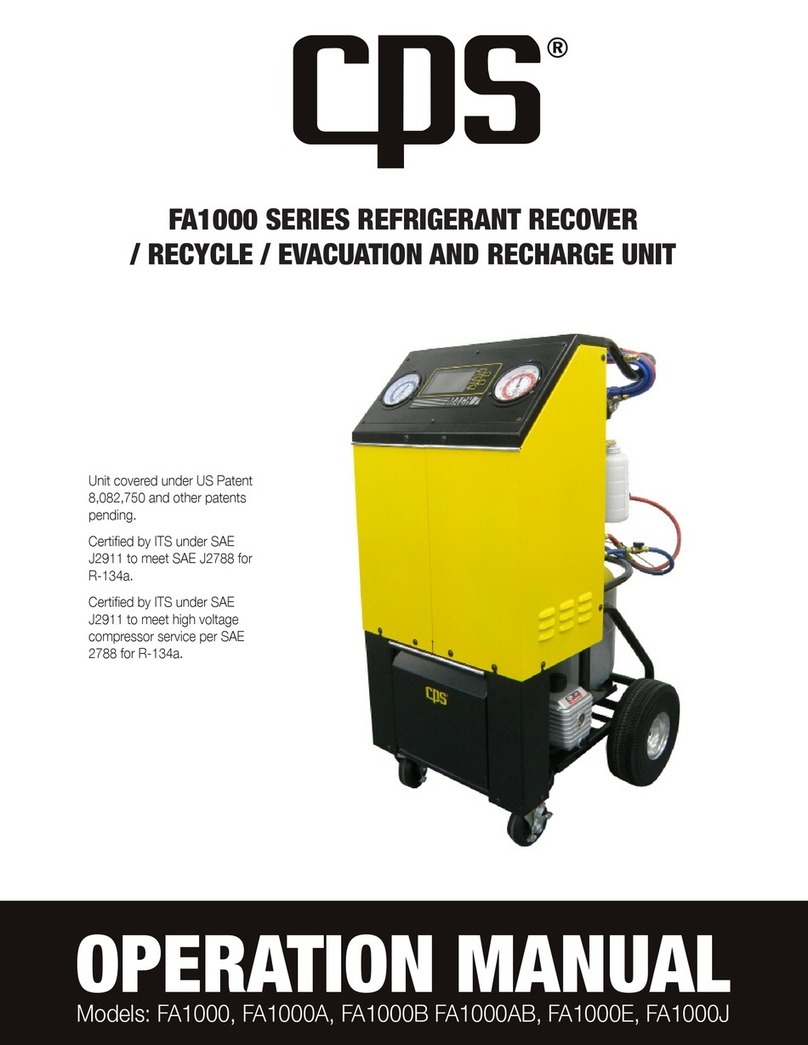
GENERAL INFORMATION
3
General Safety Instructions
ONLY QUALIFIED SERVICE PERSONNEL SHOULD OPERATE THIS UNIT. SOME COUN-
TRIES MAY REQUIRE THE USER TO BE LICENSED. PLEASE CHECK WITH YOUR LOCAL
GOVERNMENT AGENCY.
This equipment has been certified by Intertek to meet SAE J2810 for R-134a
This equipment has been designed to meet SAE J2851 for R-1234yf
CAUTION: R-1234yf is a Class A2 flammable refrigerant. Do not recover other
flammable besides R-1234yf. Minimize leakage when recovering these refrigerants.
USE IN A WELL VENTILATED AREA.
DANGER - The recovery tank used with this
unit contains liquid refrigerant. Overfilling
of the recovery tank may cause a violent
explosion resulting in severe injury or
even death. As a minimum, use a scale to
continuously monitor the recovery tank
weight.
DANGER - Avoid breathing refrigerant vapors
and lubricant vapor or mist. Breathing
high concentration levels may cause heart
arrhythmia, loss of consciousness, or even
cause suffocation.
DANGER - ELECTRICAL SHOCK
HAZARD - Always disconnect power
source when servicing this equipment.
DANGER - EXPLOSION RISK - Do not
recover flamable refrigerants.
CAUTION - All hoses may contain liquid
refrigerant under pressure. Contact with
refrigerant may cause frostbite or other
related injuries.
Wear proper personal protective equipment
such as safety goggles and gloves. When
disconnecting any hose, please use extreme
caution.
CAUTION - Avoid breathing refrigerant
vapors and/lubricant mist. Exposure
may irritate eyes, nose, throat and skin.
Please read the manufacturers Material
Safety Data Sheet for further safety
information on refrigerants and lubricants.
CAUTION - To reduce the risk of fire,
avoid the use of extension cords thinner
than NO. 14 awg. (2,5mm2) to prevent the
overheating of this cord please keep length
to a minimum.
CAUTION - Do not use this equipment in
the vicinity of spilled or open containers of
gasoline or other flammable substances.
Make certain that all safety devices are
functioning property before operating the
equipment.
